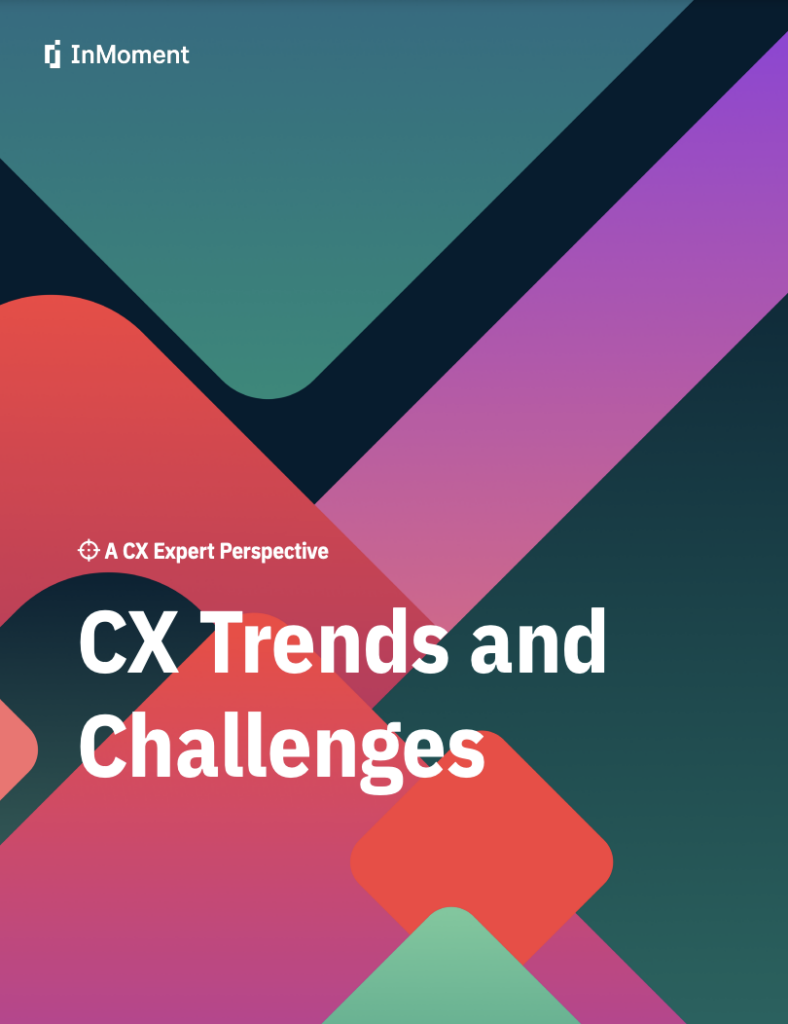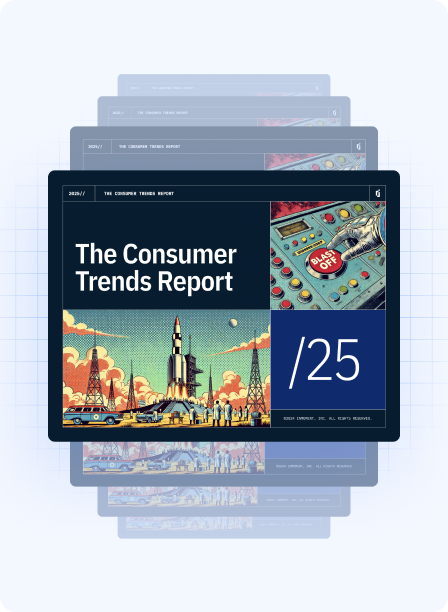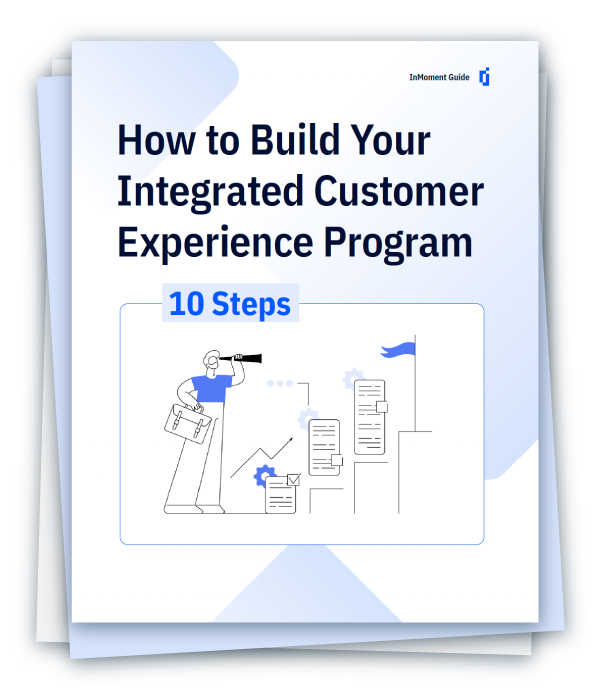I Buy, Therefore I Am: The Psychology Behind Why We Choose Our Favorite Brands
Leverage Voice of Customer technology to understand brand loyalty and the potential impact on long-term customer loyalty, advocacy, and value.
What do the shoes you wear, the coffee you drink, and the car you drive say about you?
In what ways do your favorite brands help create your personal brand? How do they contribute to fulfilling your individual needs? And how do your shopping dollars help craft—and confirm—your personal identity?
Over the past few decades, InMoment has collected and analyzed feedback from billions of customer experiences. We’ve proven—time and again—the direct connection between the meaningful differentiation of these experiences and the success of a brand’s CX objectives, such as willingness to return to, recommend, and, ultimately, promote a business. The customer stories shared at various touch points throughout the customer journey not only capture the thoughts, feelings, and attitudes within each unique experience, but confirm the congruence—or lack thereof—between customer expectations and the reality of the experience delivered.
So, Why Do Customers Choose Their Favorite Brands?
While the intelligence derived from this feedback is critical for an organization to create optimal, personalized customer experiences that drive business value, there is another salient factor that drives consumer behavior: customer-brand identity.
This concept is derivative of social identity theory and describes “an active, selective, and volitional psychological process in which customers compare their own identity to that of the company and identify with the company if it can fulfill one or more self-differential needs.” This connection between consumer and brand is much deeper and more meaningful than a singular experience; therefore, it has a greater potential impact on long-term loyalty, advocacy, and value.
A Few Examples from Best-In-Class Brands
Best-in-class brands know if they create a promise, product, and experience that evokes an identity worth aspiring to, customers will pay to align with and even promote it—increasing the lifetime value of the relationship.
Nike
For instance, professional athletes across the world wear Nike; however, the sweeping majority of Nike customers are not actually world-class and/or Olympic athletes. Yet, when a shoe represents something we identify with or aspire to attain, we’re drawn to it. The truth is, most Nike customers are just like you and me: casual athletes or city dwellers who are drawn to the aura of innovation and inspiration associated with The Swoosh. This is a perfect example of a co-created brand identity that satisfies customer needs while staying true to the brand’s promise.
Tiffany & Co.
Tiffany & Co. is another example. The blue box and white ribbon exude elegance, class, and sophistication, and therefore, the legacy luxury brand has both the benefit and challenge of living up to a well-established customer expectation. The exclusivity and allure of the iconic Tiffany Experience throughout the entire customer journey—advertising, web presence, in-store experience, packaging, unwrapping, and ownership (of both the jewelry and box!)—is about so much more than a brilliant piece of jewelry. It’s about how we see ourselves, what we aspire to, our connection with the brand, and our identity. And that’s where true brand loyalty is born.
Retail Pharmacy
The same philosophy rings true for more utilitarian industries, such as a leading retail pharmacy. While these entities are most commonly visited when people are feeling under the weather, this brand has not resigned itself to being just a drugstore. Instead, it has deliberately positioned itself as a center for wellness, from its on-site illness-prevention services to its comprehensive loyalty program (aptly named wellness+) to its online and in-store imagery and messaging focused on healthy families and happy lives. Yes, you can visit Rite Aid to buy diapers or have your prescription filled, but the company’s promise is to be a partner in long-term health and wellness that goes beyond a single interaction.
Becoming a Part of Your Customers’ Lives
Brands like Nike, Tiffany & Co., and others have moved beyond simple, transactional customer satisfaction (which has low self-referentiality), and have found ways to integrate how customers see themselves within the brand’s offering. It’s more than a product or even an experience—it’s an identity. All things being equal, self-perception and aspiration are often the prevailing factors in choosing one product or brand over another.
Creating a strong, enduring customer-brand identity is also a competitive inoculation strategy. It is evident that the more customers identify with a brand, the more resistant they are to competitive attempts at winning their business. In addition, as their identity with a brand strengthens, so does their intent to repurchase and willingness to pay more for goods and services (e.g., waiting all year for a Starbucks Pumpkin Spice Latte or immediately upgrading to the newest Apple iPhone).
5 Steps to Becoming Your Customers’ Favorite Brand
So how does a brand integrate so seamlessly into a customer’s life? Creating a strong customer-brand identity that leads to fervent loyalty may seem like a tall order, only achievable by the most established brands. There are, however, steps organizations can take right now to begin building nearly unbreakable customer relationships.
Step #1: Listen to Your Customers (and Understand What They’re Saying and Feeling)
Most brands have formalized listening channels to track customer satisfaction in real time. And while guiding metrics like NPS and OSAT can serve as barometers for how well the company is meeting customer expectations, do not ignore customer stories (e.g., feedback, social reviews, and conversations) delivered through narratives, videos, images, and audio recordings. Customer stories, both solicited and unsolicited, speak the full truth about your customer-brand identity. For this, you need powerful analytics capabilities that can derive meaning from the explicit and implicit emotions that relate to identity, and arm your company with targeted insights, prescriptive recommendations, and predictive foresight.
Step #2: Understand Your Industry, Position, and Competition
Creating a strong customer-brand identity is also about offering a differentiated experience from your competitors. In addition to customer stories, competitive benchmarking can help your brand understand its position in the market; yet, going beyond simple rankings is imperative. As our team analyzes over one million pieces of customer feedback each day, we find that specific competitors are mentioned frequently—especially when an experience fails to meet expectations. These consumers often cite the reasons why a competitor fits better with who they are and why they may return to that brand despite past negative experiences. Understanding where you sit in your competitive universe is important, but unless you know the reasons why consumers choose products or brands, a clear and actionable path to meaningful customer experiences will remain a mystery.
Step #3: Engineer a Clearly-Defined—and Customer-Aligned—Brand Identity.
Understanding your customer base, and more importantly, what drives loyalty for your brand, is critical when crafting and delivering your promise to consumers. Your presentation and offering must be in line with their self-concept and aspiration—especially those with the highest lifetime value. Remember the Tiffany example? The customer-brand identity is at play throughout the customer journey, from research to purchase to ownership. Your brand’s identity must be omnipresent, continually feeding the customer-brand relationship.
Step #4: Create a Congruent Culture
Have you ever gone shopping and dealt with an employee who clearly did not want to be there? Of course you have. Likewise, it’s evident when employees are not only brand advocates, but likely, customers themselves. For example, at Cabela’s, the frontline staff (also known as Outfitters) are more than just salespeople and cashiers—they’re experienced adventurers with a passion for the outdoors. Further, Outfittersare experts in the department in which they work, allowing them to elicit each customer’s individual needs and give personalized advice. Employees are an extension of your brand, and trust me, your customers have taken notice. Creating products, processes, and a culture aligned with your brand’s identity is infectious. When leaders and frontline employees identify with and advocate for your brand, they will create experiences that exceed customer expectations.
Step #5: Connect Through Experiences
There’s no simpler way to build customer-brand identity and loyalty than through experiences that are meaningful and authentic to that specific, co-created brand identity. In the hospitality industry, nobody does this better than a major North American Quick Service Brand. This home away from home is modeled after a traditional Southern general store with a singular mission: pleasing people. So rather than waiting for your table in a sterile holding area or on a cramped bench, guests can browse aisles of delicious country goodness, creating a seamless retail + dining journey—nary found anywhere else. Experiences that are unique to your brand’s culture, are meaningful to guests, and show you care about your customers are worth their weight in CX gold.
Wrapping Things Up
Understanding the underlying psychological mechanisms that motivate consumers to choose, stay, and advocate for brands is a critical endeavor in creating competitive advantage. By moving beyond fulfilling customers’ basic, utilitarian needs and building an ecosystem where who the customer is—or wants to be—integrates with what the brand offers, companies can develop an identity that actualizes customers’ higher-order needs. Using the aforementioned strategies, it’s no wonder the world’s leading brands have outlasted their competitors—crafting products and experiences that fulfill the deep-seated psychological needs of their customers. If trends in CX continue on their current trajectory, the necessity of customer-brand identification will determine who wins in the marketplace.














